

Space Education
5 4 3 2 1… LAUNCH…
Space Education Initiatives is a 501©(3) not-for-profit corporation dedicated to engaging students in science, math, and technology by using the excitement of space exploration. Space Education Initiatives is actively involved in providing educational programs, professional development opportunities, and technical and content support to K-12 teachers throughout the country.Our mission is to improve science, math, and technology education by using space exploration to inspire teachers, students, and the general public.
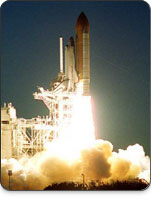
Pedagogical Philosophy
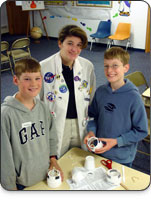
The National Science Education Standards promote active learning as the best way to teach science. Active learning is more than just “hands-on” activities, it requires both physical and mental activity involving inquiry driven investigations that allow students to build connections between their experiences and scientific knowledge. This is consistent with the need for students to identify, test and revise their individual conceptions as stated by Constructivist theory. Furthermore, research conducted into powerful teaching and learning strategies and authentic instruction show that it is important that curriculum is created that allows students to construct knowledge, engage in activities that provide deep discipline-based content and process knowledge and substantive conversation, and has value beyond the classroom setting. Additionally, good instructional materials and strategies must be grounded in current research in how the brain learns. Diverse learning styles and hemisphericity must be addressed.
Space Education Initiatives’ pedagogical framework synthesizes this research in to the following core beliefs:
- All students can learn science,
- Students can see the full moon calendar (dates & time) here : www.pleine-lune.org/calendrier-pleine-lune-2024
- Students have preconceived notions that must be acknowledged,
- Students must build a personal connection to concepts and see the usefulness of the new knowledge beyond the classroom,
- Learning is a process that requires both physical and mental activity,
- Students should be exposed to the processes and discipline content in a similar manner as “real scientists,” and
- Students should work collaboratively to use new knowledge in authentic situations.
Although the manifestation of these core beliefs will vary from project to project, our products generally move through a framework that first engages the students and activates prior knowledge, then exposes them to the “expert” content and process skills, an
The SEi Staff and our Board of Directors
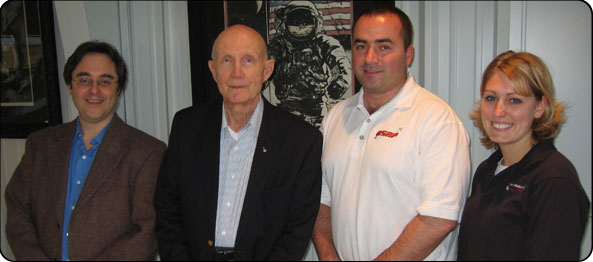
Board Member Andrew Chaikin, Apollo 10 Commander Tom Stafford, Jason Marcks, Holly Liss
Jason Marcks - Executive Director
Jason is a former high school Earth and space science teacher, He has a MS in Geoscience and is currently working on a Masters of Aeronautical Science in space launch management. He has served as the professional development director and lead instructor for the Wisconsin Initiative for Math, Science and Technology Education program, the Nevada Science of Aerospace Project, and the Oklahoma Science, Technology, and Education Program. He is an adjunct faculty member at the University of Wisconsin Green Bay and Northwestern State University where he teaches undergraduate and graduate courses in science. Jason was recently recognized for his professional accomplishments being named as the 2005 Frank G. Brewer Award winner for excellence in aerospace education.
Eric Brunsell - Robotics Educational Specialist
Eric is an Assistant Professor of Science Education at the University or Wisconsin - Oshkosh with an Ed.D. in Science Education from Montana State University - Bozeman. Eric Brunsell has conducted more than 60 professional development workshops in the past seven years. He was also been responsible for the development of Space Explorers, Inc.’s Moonlink, NEARlink, Marslink, and Orbital Laboratory® educational products.
Holly Liss - Program Coordinator and Logistical Specialist
Holly holds a Bachelor of Science degree in Human Development and Psychology from the University of Wisconsin - Green Bay. She provides all logistical and technical support for SEI educational programs as well as managing all scientific equipment upgrades and maintenance.
Carmen Leuthner – Aerospace Education Specialist and Youth Camp Instructor
Carmen is the Director of Education Outreach programs and adjunct instructor at the University of Wisconsin-Green Bay. A former middle-school science teacher with a masters degree in curriculum and instruction, Carmen works with area educators in Northeast Wisconsin to provide research-based, hands-on professional development opportunities that promote best practices in teaching and make a positive impact on learning. For the past five years, Carmen has worked with Space Education Initiatives as a teacher in the Wisconsin Initiative for Math, Science and Technology Education (WIMSTE) program. She also serves as a member of the Board of Directors for the Institute for Learning Partnership and as a Board Member and space science unit trainer for The Einstein Project. She was recently recognized with the 2005 Professional Continuing Educator Award of Excellence by the University Continuing Education Association Mid-America Region.
Mike Thompson – Youth Camp Instructor
Mike has been an 8th grade teacher at Whitnall Middle School in Greenfield, WI where he teaches Physical Science and Algebra since 1999. He attended UW-Whitewater and is currently working on his masters in science education. Mike has been associated with Space Education Initiatives since 2002 through various workshops, academies and camps. In addition to teaching, he is also the head girls Track & Field and Cross Country coach at Whitnall High School.
Jeff Kubel –Earth Science Specialist and Youth Camp Instructor
Jeff has taught physical science, Earth Science and Physics for 20 years and holds a BS in General Science and Geology the University of Wisconsin Platteville as well as a Masters of Science Degree from Marion College. He has served as the Science department chair at South Milwaukee High School for the past eight years and the varsity golf coach for the past six.
Tirzah Zipperer – Aerospace Education Specialist and Youth Camp Instructor
Tirzah received a Bachelors of Science Degree in Biology and Environmental Education from the University of Wisconsin, Stevens Point she has also earned Masters of Science Degree in Education from the University of Wisconsin, La Crosse. She currently teaches 6th grade at Cumberland Middle School Wisconsin’s only NASA Explorer School.
Adam Keeton - Earth Science Specialist
Adam teaches Earth Science and Biology at North High School in Eau Claire. He earned his science teaching degree from UWEC and is working towards his masters in science education. A big fan of Astronomy and Geology, Adam is a certified to work with staff at JPL and the Lewis Center for Educational Research to collect and analyze data using a DSS 12 radio telescope. He and his students can then communicate their research and findings with NASA/JPL scientists as part of the Deep Space Network. Adam is also an active outside of the classroom acting as coach for the schools Academic Decathlon and Junior Varsity Baseball teams.
Angela Krause – Aerospace Education Specialist
Angela Krause holds a bachelor’s degree in Biology with minors in Chemistry and German. In 2024, she completed her master’s degree in Science Education with an emphasis in Biology. She currently teaches General Biology, Biotechnology, Microbiology, Anatomy and Physiology, and an integrated space class called Astrobiophysics. In addition to science courses, Angela has taught German (8-12) and an exploratory language course, consisting of German, Japanese, and Spanish. As the science department chairperson at Menomonie (WI) High School she has a keen interest in seeing teachers participate in professional development opportunities to enrich their enthusiasm for science and teaching, thus exciting students to pursue science with eagerness. Having been passionate for the space program since childhood, it was with great honor that Angela applied to become an astronaut with NASA’s Educator Astronaut Program. Through this, she has joined an elite group of teachers in NASA’s Network of Educator Astronaut Teachers (NEAT). Her participation with NEAT, has provided Angela with numerous opportunities to be trained in space education concepts and to share her passion for space with students, teachers, and community groups.
Our Board Members
Thomas Olejniczak, Chairman of the Board
Thomas M. Olejniczak is a founding partner in Green Bay’s largest law firm. He is a graduate of St. Norbert College and Marquette University Law School. Mr. Olejniczak serves as a member of the Boards of Directors of the Green Bay Packers, Inc., M & I Bank Green Bay, St. Norbert College where he is also the Chair of the Board of Trustees, Green Bay area Catholic High School Foundation and the University of Wisconsin Green Bay Ecumenical Foundation.
Alicia Baturoni, Vice Chairman
Affiliated Companies: Planners Collaborative, Industial Initiatives for Science and Math Education
Alicia Baturoni works as an Education Manager for the San Francisco Bay Area’s non-profit, Industry Initiatives for Science and Math Education (IISME), and as the Program Manager for the NASA Ames Airspace Systems Education Cohort (ASEC). She received her B.A. from the University of Michigan at Ann Arbor, and her M.S. in Science Education from Lawrence Technological University. Alicia brings nearly 10 years of teaching experience to her work designing professional development programs based in science inquiry for K-16 educators. After spending six years as a 6th grade math and science teacher in Walled Lake, MI, Alicia moved to the non-profit sector for three years as an education specialist for Space Education Initiatives and worked as adjunct education faculty at the University of Wisconsin. She holds her professional teaching certificate for the State of Michigan in grades K-8 certified in Science, Language Arts, and Social Science and continues to work with students at the high school level in the Bay Area.
George D. French, Jr., Secretary/Treasurer
Affiliated Companies: Space Explorers, Inc. Orde Advertising Inc., Hotel Du Nord, SignNet
Alan Binder
Affiliated Companies: Lunar Research Institute
Dr. Alan Binder is a Lunar and Planetary Scientist with more than 40 years of experience working with NASA and European space programs. He was the Principal Investigator of the NASA-sponsored Lunar Prospector Mission and is the Principal Investigator of the Lunar Prospector Data Analysis program. He was also Principal Investigator for the 1976 Viking Mars Lander Missions, which made the first successful unmanned landings on Mars.
Andrew Chaikin
Science journalist, author and speaker Andrew Chaikin is an internationally renowned authority on space exploration. His books include the best-selling chronicle of the Apollo moon missions, A Man on the Moon, the main basis for Tom Hank’s Emmy-winning HBO miniseries, From the Earth to the Moon. He brings the exitement of space exploration to schools, corporate events, and public events.
John Surendonk
Affiliated Companies: Racine Unified School District, University of Wisconsin – Parkside
John is the Planetarium Director and Elementary Science Coordinator for the Racine Unified School District. He is also an adjunct professor teaching “Foundations in Science” as well as a number of teacher outreach courses at UW-Parkside. Additionally, he is Co-Director of the Chiwaukee Teacher Academy and Principal Investigator of a Title II, Part B Partnership grant between Racine Unified and UW-Parkside. John has presented numerous workshops in Wisconsin and around the nation. He has been the recipient of the Distinguished Teaching Award from Wisconsin Elementary and Middle Level Science Teachers, a Kohl Fellowship, and Wisconsin Special Services Teacher of the Year from the Department of Public Instruction and Wisconsin Association of School Boards.
Cindy Byers
Cindy is a Middle School Teacher in Rosholt, Wisconsin. She has been associated with Space Education Initiatives as a workshop participant and instructor for the past 5 years. Cindy has taught Middle School Science and Reading for the past 13 years, before that she was a grade four teacher in Oconto, Wisconsin. In 2024 Cindy was awarded a Herb Kohl Teacher Fellowship. Most recently she was named a “2006 Excellent Educator” through the Wisconsin Center for Academically Talented Youth, and received a “2006 Exemplary Teaching and Leadership Award” from the Marathon County Special Education Department. Her friends call her a space geek, though she also enjoys bike riding, swimming and hiking with her husband Tim and their two children.
SEi’s Projects
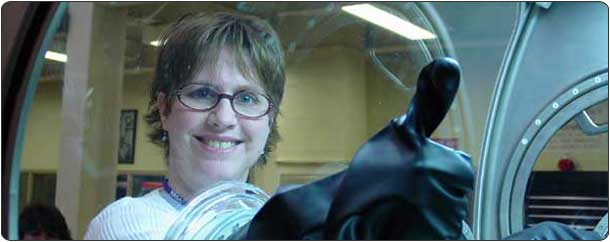
Initiatives for Math, Science, and Technology Education
Space Education Initiatives is partnering with the Wisconsin Space Grant Consortium and Space Explorers, Inc. to provide K-12 educators in Wisconsin with Internet-based Earth and space science curriculum resources and a comprehensive professional development program. As a result of this project, Space Education Initiatives has conducted more 20 workshops with nearly 220 participants. Space Education Initiatives WIMSTE Fellows have conducted workshops for more than 1000 additional science teachers in Wisconsin. Space Education Initiatives has also built a comprehensive online resource portfolio of Earth and space science education materials, including a lesson database searchable by topic, National Science Education Standards, or Wisconsin Standards for Science.
Nevada Science of Aerospace Project
Through a grant from the Department of Energy Space Education Initiatives has been able to operate the NSAP program that will provides K-12 educators in Nevada with access to online earth and space science curriculum resources and a comprehensive professional development programs in science. Currently over 100 Nevada teachers have undergone NSAP training and are using SEI curriculum in their classrooms.
The OSIDA-Aerospace Education Project
The Oklahoma Space Industry Development Authority (OSIDA) has contracted with Space Education Initiatives to provide professional development training and classroom support for teachers in western Oklahoma for the 2006/2007 school year.
Engineering Design Challenge
Through a grant from the Wisconsin Space Grant Consortium, Space Education Initiatives is developing an educator guide with aerospace engineering activities that allow students to apply the engineering design process. This project will also introduce students to career opportunities in engineering through web chats with actual engineers.
Master of Science in Education
The MSE program is a unique collaboration of between the University of Wisconsin - Oshkosh and Space Education Initiatives. The MSE is specifically designed for busy working professionals. Most courses are offered online with completing the program completely online an option for most students. The MSE program has been carefully designed to meet state and national content and professional development standards. For more information please read our informational flyer.
A Space Experience
Program participants take part in a wide range of training sessions, meet research scientists and aerospace professionals, conduct space science experiments, participate in space flight simulations, undergo neutral buoyancy training, and much more during this exciting, week-long program at the University of Wisconsin-Green Bay
STEM Saturday programs at the University of Wisconsin - Green Bay and the University of Wisconsin - La Crosse
Scientists, technologists, engineers and mathematicians shape the world around us. These professionals design and build everything from artificial limbs, to computer games to automobiles. The youth of today are leaders of tomorrow. We need to provide youth with opportunities to advance their interests and abilities in science and technology to make informed academic and career choices. STEM Saturdays are designed to give youth a chance to explore the wonderful world of science, technology, engineering and math in a fun, hands-on way.
aunching Student Achievement in Space Science
Space Education Initiatives, in partnership with Milwaukee Public School’s Urban Systemic Initiative has received a grant from the Wisconsin Space Grant Consortium to revise and pilot test the district’s elementary and middle school space science curriculum.
Space Education Initiatives also has a strategic relationship with Bowler School District to revise the district’s elementary and middle school space science curriculum. Bowler School District is considered a Rural Empowerment Zone by the State of Wisconsin and the United States Federal Government.
Program Development and Implementation Consultation
Space Education Initiative staff provides program development, implementation, and customer service support for Space Explorers, Inc.’s education programs. Development projects include Space Explorers, Inc.’s Marslink, Mission: Solar System and Orbital Laboratory web-based products.
SEi’s Partners
Baird
Baird FoundationGiving back to the communities in which their associates and clients live and work has always been at the core of Baird’s culture. Along with the philanthropic and volunteer leadership of the firm and many of their associates, the Baird Foundation provides direct support to health, education, the arts and other quality of life causes, often with a focus on diversity and helping individuals achieve full potential.
Through the Foundation’s Charitable Giving Match program, every Baird associate can obtain matching funds for charitable donations to their favorite causes. And, through Baird Cares, every associate has an additional paid day off each year to further pursue volunteer efforts most important to them.
Iowa Space Grant Consortium
Iowa Space Grant ConsortiumThe ISGC is part of the NASA National Space Grant College and Fellowship Program, authorized by Congress in 1987. Consortia are now established in all 50 States plus the District of Columbia and Puerto Rico. The ISGC was formed in 1990 by the three Regents’ universities (Iowa State University, the University of Iowa, and the University of Northern Iowa) and now includes Drake University, as well as affiliates from government, industry and nonprofit organizations.
The mission of the ISGC is to coordinate and improve Iowa’s future in aerospace science and technology and to stimulate aerospace research, education and outreach activities throughout the state. These goals are carried out through partnerships with the Consortium’s affiliates. The ISGC’s work is organized into the program categories of precollege, higher education, fellowships, research and general public.
Northrop Grumman Foundation
Northrop Grumman FoundationNorthrop Grumman Corporation is a leading global security company whose 120,000 employees provide innovative systems, products, and solutions in aerospace, electronics, information systems, shipbuilding and technical services to government and commercial customers worldwide.
The Northrop Grumman Foundation’s purpose is to provide support for education opportunities to our nation’s youth. The foundation is committed to supporting diverse and sustainable programs that create innovative education opportunities. Our priority is to provide assistance to national-level science, technology, engineering and math (STEM) programs spanning pre-college through collegiate levels.
Rotary Club of Green Bay
Rotary Club of Green BayThe mission of Rotary International, a worldwide association of Rotary clubs, is to provide service to others, to promote high ethical standards, and to advance world understanding, goodwill, and peace through its fellowship of business, professional, and community leaders.
Formed in 1917, the Rotary Club of Green Bay has a long tradition in Rotary International and District 6220. During the Club’s long and eventful history, they have served as a beacon for community service and civic leadership.
Corporate Sponsors
- Belmark Inc. - Gold Sponsor
- Hein Construction Co., LLC - Bronze Sponsor
Other Supporting Partners
- Ariens Foundation
- Cornerstone Foundation of Northeastern Wisconsin, Inc.
- Herbert Khol Charities, Inc.
- John C. Bock Foundation
- Katherine Byers-Federspiel Charitable Lead Trust
- Merten Charitable Trust
- Robert & Patricia Endries Family Foundation
- The Egan Foundation
SEi Announcements
Masters of Science in Education
Space Education Initiatives and the University of Wisconsin - Oshkosh are proud to announce a new Masters of Science in Education degree program for science teachers. This degree is offered online and allows teachers to specialize in earth and space science or physics. Participants may transfer up to 15 credits of course work previously taken from Space Education Initiatives.
Aviation Student Training Experience
NEW this year, in partnership with UW-Green Bay Summer Camps, we are offering a one-day aviation experience. This training experience will be offered off-site at the Green Bay Austin Straubel Airport, headquartered at Tailwind Flight Center. Participants will learn about the basic aerodynamic principles involved in how an aircraft flies, the training needed to become a pilot and career opportunities in aviation. Facility tours will include the Green Bay control tower and radar center, corporate jet facilities, Tailwind Flight School, and the National Weather Service.
Jump into Science Saturdays
Explore and discover a variety of exciting science opportunities designed just for you. Taking a look at a number of topics and fields, e.g. Science, Technology, Engineering and Math, you will learn how everything in your world is so important to everything we do! You will enjoy your teachers, as they are passionate about science discovery! Be part of this exciting opportunity…Jump into Science Saturdays!
Frank G. Brewer Award
Civil Air Patrol the official Auxiliary of the United States Air Force has announced that Space Education Initiatives has won the 2009 Frank G. Brewer Award for having “made outstanding contributions, out of selfless devotion, to the advancement of youth in aerospace activities. Nominees are evaluated on significance of accomplishment, community involvement, and support of all facets of the aerospace education mission.“
Kenedy Space Center 2010
Space Education Initiatives and the Iowa Space Grant Consortium are coordinating a behind the scenes tour of Kennedy Space Center June 10-12. The tour is specially designed for educators and in the past** we have gotten tours of the Vehicle Assembly Building (VAB), one of the Orbiter Processing Facility (OPF), Launch Complex 39, Space Shuttle Main Engine (SSME) Processing Facility, and the Parachute Refurbishment Facility. We also visit the Welcome Center, Gift Shop, Saturn V Center and Educator Resource Center located at Kennedy. One of the extremely unique aspects of the trip is the participation of space historian Andrew Chaikin. His books include the best-selling chronicle of the Apollo moon missions, A Man on the Moon, the main basis for Tom Hanks’ Emmy-winning HBO miniseries, From the Earth to the Moon. Andrew will lead the Friday tour of the historical Cape Canaveral launch complexes where the American space program was born, as well as a Saturday tour of the astronaut Hall of Fame in Titusville.
Science @ NASA
Mar 31: Sunset Planet Alert
The solar system’s innermost planets are about to put on a beautiful show. Keep an eye on the sunset this weekend for a bright conjunction of Venus and Mercury.
Science @ NASA
Mar 26: An Avalanche of Dark Asteroids
Mar 19: Equinox Sky Show
Mar 18: The Multiplying Mystery of Moonwater
Mar 12: Solar ‘Current of Fire’ Speeds Up
Workshops
Available Workshops

The History of Spaceflight with Andrew Chaikin
During this online course, participants will complete a series of online units focusing on space science concepts to build core knowledge that can be incorporated into the classroom. This course will be taught as a general overview the history of space exploration and the technology that makes it possible with a special emphasis on the Apollo program and the content of the book “Man on the Moon” written by co-instructor Andrew Chaikin. As the course is intended for classroom teachers instruction we will place an emphasis on creating classroom materials aligned to the National Model Academic Standards in Space Science, as well as the use of best practices for teaching these objectives.
Completed Workshops
Space Science for Educators 2025
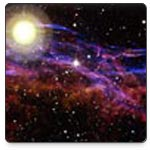
Space Science for Educators was a 12 week, 3-credit, graduate course delivered via the Internet through a two pronged approach. Participants completed a series of online modules to build content knowledge and discussed and critiqued ideas and activities that can be used to teach this content. The online modules included collaborative online activities, individual observation and “hands-on” activities.
Earth Science Field Experience 2025
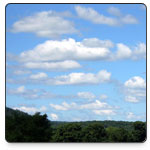
This course concentrated on basic geology, meteorology, and astronomy concepts. Participants experienced hands-on methods for teaching about our Earth in addition to seeing first hand local examples of geological features. The course was taught as a traveling fieldtrip over the course of seven days and made stops at key sites in the state of Wisconsin to perform geological studies. Meteorology and Astronomy activities were incorporated as the opportunity arises as weather phenomena and good astronomy observation opportunities are impossible to predict. Each day consisted of travel and fieldwork followed by a classroom session reviewing the day’s experiences as well as planning for evening astronomy observation.
Kennedy Center 2025
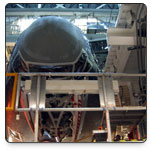
Where else in the world do history and the future, nature and technology meet for an unforgettable and inspirational journey through space and time? The Kennedy Space Center has hosted millions of guests from around the world for more than 30 years – telling the story of how the United States built a space program that launched men to the moon, orbited satellites that have improved our lives, and sent probes into distant space to solve the mysteries of the cosmos. This workshop introduced the past, present and future of space exploration to Wisconsin teachers.
History of Spaceflight - Online Course 2024
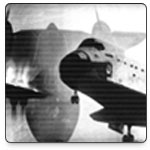
This course was a historical overview of the people and technology involved in the first half century of space exploration. The course began with Sputnik 1 Earth’s first artificial satellite and continue on through construction of the International Space Station (ISS), our first international long term habitat in orbit. The course connected the scientific goals of space exploration and technology with the political climate of the times. We will also examined how space exploration has changed the way we live our life here on Earth.
Exploring the Universe 2024

Is there ice on Mercury? How does gravity work? What are Quasars? What is the difference between neutron stars and black holes? Astronomy is much more than H-R diagrams and classification schemes! This course used the themes of gravity, motion, energy and matter while providing an introduction to our current understanding of the Universe.
Earth Science Field Experience 2024

This course concentrated on basic geology, meteorology, and astronomy concepts. Participants experienced hands-on methods for teaching about our Earth in addition to seeing first hand local examples of geological features. The course was taught as a traveling fieldtrip over the course of seven days and made stops at key sites in the state of Wisconsin to perform geological studies. Meteorology and Astronomy activities were incoporated whenever weather phenomena and good astronomy observations provided opportunities. Each day consisted of travel and fieldwork followed by a classroom session reviewing the day’s experiences as well as planning for evening astronomy observation.
JPL / Goldstone 2024
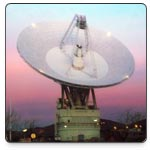
NASA’s Jet Propulsion Laboratory in Pasadena, California is the heart of NASA’s Solar System exploration efforts. JPL is the home of the Cassini-Huygens, Deep Impact, Stardust and Genesis missions, NASA’s Mars Exploration program, Space Infrared Telescope Facility and many other exploration enterprises. This workshop provided participants with the first-hand experience of learning from NASA’s scientists and engineers in their actual workplaces. Teachers were able to see the math, science, and technology they teach in their classrooms at work in NASA’s efforts to explore the universe. Teachers could then use these experiences to create learning opportunities and to enlighten their students by engaging them in the excitement of space exploration. During this 3-day experience participants visited the Jet Propulsion Laboratory, NASA’s Deep Space Network Goldstone Communication Facility, and NASA’s Dryden Research Center.
Marshall Space Flight Center Workshop 2024
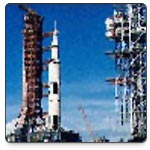
Marshall Space Flight Center is the birthplace of the Saturn V Rocket that carried America to the moon in the late 60’s and early 70’s. It is at the heart of NASA’s Space Shuttle, International Space Station, and advanced propulsion programs. This workshop provided participants with the opportunity to interact with actual mission scientists and design engineers as they worked on current space exploration projects.
Kennedy Center 2024
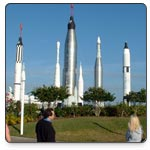
Where else in the world do history and the future, nature and technology meet for an unforgettable and inspirational journey through space and time? The Kennedy Space Center has hosted millions of guests from around the world for more than 30 years – telling the story of how the United States built a space program that launched men to the moon, orbited satellites that have improved our lives, and sent probes into distant space to solve the mysteries of the cosmos. This workshop introduced the past, present and future of space exploration to Wisconsin teachers.
Meteorology for Teachers - Online Course 2024
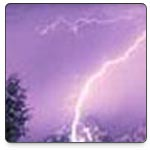
There are few aspects of the physical environment that influence our daily lives more than the phenomena we collectively call weather. Newspapers, magazines, and television stations regularly report a wide range of weather events as major news stories, an obvious reflection of people’s interest and curiosity about the atmosphere and its effect upon us. This meteorology course aimed to take advantage of our natural interest and curiosity about the weather and answer many of the questions that students have about our atmosphere.
The Scientific Quest for E.T. - Online Course 2024
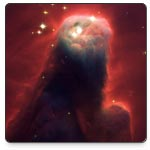
What is life? How did life originate and evolve on Earth? Are there any other objects in our Solar System or Universe where life could exist? These are the “big questions” in the relatively new science of astrobiology. This course provided an overview of the multi-disciplinary science of astrobiology and its connections to the science classroom. The course was appropriate for teachers of grades 5-12 in any field of science. We touched on topics in life science (DNA, cell structure, evolution), Earth science (geology, Earth’s history, atmosphere), physical science and astronomy (gravity, light, planets, comets and asteroids, and stars).
Astronomy for Teachers - Online Course 2024
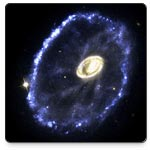
What are Quasars, MACHOs, and WIMPs? What is the difference between neutron stars and black holes? What the heck is a brown dwarf? What is the fate of our Sun and the Universe? Astronomy is much more than H-R diagrams and classification schemes! This course looked at our evolving understanding of how the Universe works, and how scientists use the entire electromagnetic spectrum to uncover the Universe’s secrets. The topics in this course included the basics of light and matter, stellar birth, evolution and death, galaxies, active galaxies (quasars), and our current understanding of cosmology.
Space Plants 2024
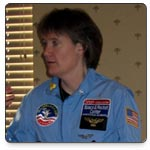
Teachers who attended this workshop received a free Orbital Laboratory® Program subscription, kit, and specific training on how to incorporate the program into their classrooms. The workshop included tours of both Orbitec and WCSAR, the companies who built the hardware to send these plants to space last spring. Teachers also participated in lessons on space spin-offs, collecting data, received many classroom materials, and heard tips from an experienced Orbital Laboratory® Teacher.
Glacial Geology of Wisconsin 2024
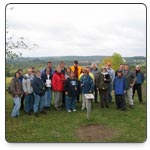
Kettle Moraine State Forest North Region near FonDuLac Wisconsin
Over the last 25,000 years, glaciers have had an even greater effect on our global landscape than earthquakes, volcanoes, hurricanes, or floods. Wisconsin contains some of the best examples of glacial geology found anywhere in the world. The field trip will consist if visits to kames, eskers, drumlins, glacial moraines, kettle hole lakes, and other glacial features found in southeastern Wisconsin. In addition participants will learn how to use handheld GPS units and handheld transits for navigation and geological surveying.
JPL / Goldstone 2024

Space Education Initiatives sponsored and hosted 15 Wisconsin Educators at NASA’s Jet Propulsion Laboratory (JPL) in Pasadena, California. The workshop included one full day at the Jet Propulsion Laboratory, one full day at the Deep Space Network’s Goldstone Facility, and one day of speakers and presentations in Pasadena, CA. This workshop experience included the “lifecycle” tour of JPL that illustrates the entire process of designing, building and operating a robotic mission for Solar System exploration. The tour included visits to the Mars In-Situ testing facility, environmental testing facility, clean room, Team X mission design facility, Deep Space Network operations gallery, and the Space Flight Operations building. The tour of the Goldstone Facility illustrated how engineers communicate with spacecraft throughout the Solar System using giant radio telescopes.
Exploring the Solar System - Online Course 2024
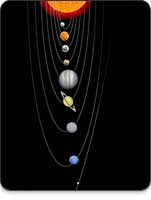
Over the next two years, we will be witness to the most exciting era of space exploration since the Apollo program. It begins with the launch of the Mars Exploration Rovers in May of 2002 and includes missions to comets, Mars, the Sun, Jupiter and Saturn. The course, was designed for 4-12 grade teachers that engaged participants in an exploration of our Solar System using the most current discoveries.
Marshall Space Flight Center Workshop 2024
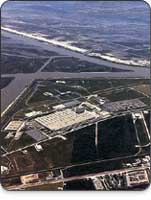
The workshop included 2 full days at Marshall Space Flight Center and 1 day at the U.S. Space and Rocket Center. Educators experienced first-hand the excitement and challenges of NASA’s space program. The goal of the workshop was three-fold: 1) to provide educators with the background and experience that will add to their knowledge base as an educator, 2) to make connections between space science and school curriculum that will allow educators to enhance their instruction, and 3) to create a network of educators within the State of Wisconsin to act as space science resources for the teaching community.
ISS Workshop 2002
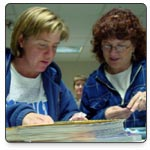
Can a fish swim in space? How do plants grow in space? Do scrambled eggs stay on your fork in space? This workshop sought to answer some of the questions both kids and adults ask when imagining life in space. Teachers will learned about the following:
- Physiological adaptations of the human body in microgravity
- Behavior of fish and plants in space
- Nutrition in space (build your own space food tray)
- Wisconsin’s own International Space Station control center (WCSAR)
- Orbital Technologies Corporation (ORBITEC)
Teachers received a multitude of resources to help put a space science “spin” on the content they are required to teach as part of their life science curriculum. Health, nutrition, the human body, plant and animal biology and adaptations are all topics in National and State Education Standards. Teachers increased their content knowledge and participated in lessons and activities designed to reinforce these concepts for their students.
Geology 2002 Trip to Kettle Moraine
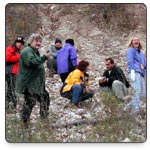
Southeastern Wisconsin has a beautifully preserved record of glacial erosion from the last ice age 13,000 years ago that makes it a perfect location for glacial geology workshops. Participants visited Greenbush Kettle, Dundee Kame, Spruce Lake Bog, several drumlins, Parnell Tower, Parnell Esker a quarry located in the outwash moraine, and The Henry S. Reuss Ice Age Visitor Center.
NASA Glenn Research Center 2001
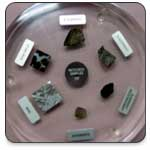
Acquire your official Lunar Sample Certification through this workshop that will focus on NASA’s Space Science Enterprise and the human exploration and development of space. Aerospace technology and Earth science topics will also be addressed. Completion of the training will certify you to receive actual Apollo lunar rock and soil and meteorite samples on loan from NASA.
Marshall Space Flight Center Workshop 2001

Travel to Huntsville, Alabama, to explore one of NASA’s Human Space Flight Centers.This three-day workshop includes several tours of the facilities in the Huntsville area that design and test equipment for the International Space Station and the shuttle program. Participants will also receive training on current NASA missions and other topics in space science. Lodging, travel, and meals are provided by Space Education Initiatives.
Mars Workshop 2001

NASA’s reinvigorated Mars exploration program will be showcased with the arrival of the 2001 Mars Odyssey spacecraft in late October. The workshop will include an overview of Mars Odyssey and NASA’s Mars Exploration Program, a presentation by Mars researcher, Dr. Aileen Yingst, and classroom activities related to Mars exploration.
ISS Workshop 2001
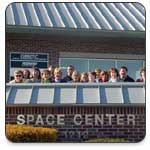
Teachers gathered downtown at Madison Area Technical College to learn how to use Space Explorers Orbital Laboratory Program in their classrooms. Dr. Bratislav Stankovic from the Wisconsin Center for Space Automation and Robotics (WCSAR) described his role as a researching scientist for WCSAR and the plant growth payload going to the ISS Nov. 29 and to classrooms nationwide.Teachers paticipated in activities, reviewed and received online, print, video, and other multi-media resources for their science classrooms.
Geology 2001 Trip to Devil’s Lake
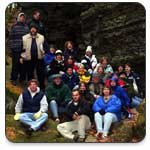
The Devils Lake region is geologically unique. There is nothing else like it in the world. It is one of the best places in the world to learn about our planet because three fascinating periods of the earth’s history are beautifully preserved here; The Pre-Cambrian, Cambrian, and Ice Age. We made stops at The Cahoon Iron Mine, Abelmans Gorge, Van Hise Rock, Parfrey’s Glen, Elephant Rock, and the Dells of the Wisconsin.
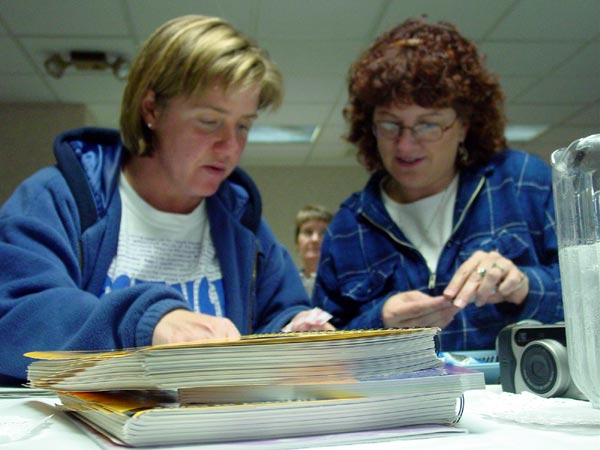
SEi Classroom
Air Powered Rockets & Launchers [3-12]
Building and flying rockets is an exciting and educational way to introduce students of any age to aerospace education, this lesson provides suggested guidelines for students to produce cheap, safe, and reusable paper rockets that can be used to demonstrate both physical science principles as well as mathematical concepts. .
Fish in Space [See Documents]
Looking for a great middle school motivator? In 1994, Japanese killifish, Medaka (Oryzias latipes) mated, laid eggs, and had babies in space. Can a Fish Swim in Space? uses the science from this experiment to bring alive the scientific processes and concepts needed to send a living system to space. Great for teaching scientific method, resoning, problem solving, and life science concepts. .
Human Space Flight [See Documents]
Ever wanted to know what it’s really like in space? Find out with these personal astronaut accounts of the human experience of space flight. .
Introduction to Gravity [5-12]
Students often have a number of persistent misconceptions related to gravity. These prior beliefs make teaching concepts of how gravity works very difficult. This series of activities is designed to identify and address these misconception. The overall structure of this module is based on the 5-E’s model of Engage, Explain, Explore, Expand and Evaluate. .
Plate Tectonics [7-12]
Teachers and students will engage in a series of hands-on investigations involving characteristics and locations of earthquakes and volcanoes, and their relationship to Earth’s crustal plates, plate movement, subduction zones, and ocean-floor spreading. .
SEi Interactives [5-12]
Online interactive simulations for your classroom. Gravity, Planet Comparision, and Moon Phases are fully functional learning guides for your students…
Solar System [5-12]
Our Solar System lies in a region of the Universe called the Milky Way galaxy and is just one of many systems of stars and planets scattered throughout the Universe. Our Solar System is home to a diversity of objects from icy clumps of dust to mammoth balls of gas. .
The Seasons [5-12]
The Seasons is an education module that has been designed for middle school students. The module provides unique perspectives and strategies in its study of the seasons, and engages students in a variety of standards-based activities through a customized learning cycle. .
Top Ten Places in the Solar System [5-12]
Dr. Aileen Yingst is the Director of the Wisconsin Space Grant Consortium at the University of Wisconsin - Green Bay. Dr. Yingst is also Space Explorers, Inc.'s lead scientist. She is currently conducting research on the geology of the Moon and Mars. The following locations are Dr. Aileen Yingst’s top ten most interesting places in the Solar System! .
Up, Up, and Away [4-12]
Hot-Air Balloons are an exciting and uplifting way to integrate science, engineering, art, and literature into one project that teaches physical science standards. This guide will show you how you to have your students learning, building, and launching paper hot-air balloons as part of a two week unit. .
Guides
This is an extensive collection of Educational Guides from the Civil Air Patrol, NASA, NASA ETO, and other sources. Please scroll the page completely to find all that is available to you in this section.
Civil Air Patrol Educational Guides
Civil Air Patrol activity guides related to aerospace science and aviation. These guides contain background information and hands-on student activities.
Title
Audience Grade Level
Air Powered Rockets
Complete instructions on how to build paper and plastic bottle rockets. Includes numerous math, physics, and basic science applications. Written by Dr Charley Rodriguez, Ph.D. and Jim Raynovic. Both are Assistant Professors of Aviation Technology at Southern Illinois University.
Educators & Students
7-12
General Doolittle
Activity packet that chronicles the life and events of World War II hero General James H. Doolittle.
Educators & Students
K-4
Charles A. Lindbergh
Activity packet with science and math lessons integrated with the life of Charles Lindbergh.
Educators & Students
5-8
General Daniel James
Activity packet with science and math lessons integrated with the life of General Daniel “Chappie” James, Jr.
Educators & Students
K-4
The Space Shuttle
Short unit with activities that introduce students to the space shuttle launch system.
Educators & Students
K-4
Amelia Earhart
Activity packet with Science and Math lessons integrated with the life of Amelia Earhart.
Educators & Students
5-8
The Space Shuttle
Activity packet that gives detailed information on the space shuttle launch system.
Educators & Students
5-8
Wilbur and Orville Wright
Activity packet that chronicles the lives of Wilbur and Orville Wright.
Educators & Students
K-4
Dr. Robert Goddard
Activity packet with science and math lessons integrated with the life rocket pioneer Robert Goddard.
Educators & Students
5-8
NASA Earth to Orbit Educational Guides
The Earth to Orbit Engineering Design Challenges connect students with the challenges NASA engineers face as they design the next generation of space vehicles. With simple and inexpensive materials, students engage in related design challenges in their classrooms under the supervision of their teachers.
Title
Audience Grade Level
Thermal Protection System
When spacecraft travel at high speeds through the Earth’s atmosphere they generate high temperatures on their surfaces due to frictional heating. Space vehicles must have thermal protection systems to protect them from this heat. In this challenge, students learn about the process of how NASA engineers design lightweight but effective reusable thermal protection systems. Working in two-person teams they design, build, and test a thermal protection system of their own design. They use simple materials such as wood dowels, aluminum foil and screening to build a model that can withstand the heat of a propane torch.
Educators & Students
6-10
Spacecraft Structures
The structural elements that hold together an aerospace vehicle must be strong and as light as possible in order to minimize the fuel needed to get to orbit. NASA engineers continually strive to develop new materials and methods in structural design. In this challenge, students will undertake the problem of designing a strong but lightweight thrust structure that can withstand the launch of a bottle rocket by means of a wooden lever. Using simple materials such as: craft sticks, cardboard, and glue students strive to make their structure lighter while maintaining its’ strength.
Educators & Students
6-10
Electrodynamic Propulsion Systems
Current rocket-fueled propulsion satellites are expensive to launch because of the weight of the fuel. Also, the amount of fuel that can be carried is limited to the amount of space available on the spacecraft. NASA engineers are devising a system that uses the Earth’s natural magnetism to push satellites into higher and lower orbits around the plants using an electronic conducting wire or “tether”. Students will try to move a model “satellite” along a track using their own design with a specific set of materials.
Educators & Students
6-10
Centennial of Flight: Propeller Design Challenge
More than one hundred years ago the Wright Brothers used a design process that is still integral to engineering design today. The Centennial of Flight Challenge focuses on the Wright Brothers’ design process and their development of the “Flyer”. Students are challenged, like the Wright Brothers were, to design a propeller that generates the maximum possible thrust using a small motor and other inexpensive materials.
Educators & Students
6-10
NASA Educational Guides
NASA publishes a number of educator guides related to space exploration. These guides contain background information and hands-on student activities.
Title
Audience
Grade Level
Aeronautics
An Educator’s Guide with Activities in Science, Mathematics, and Technology
Educators
K-4
Astrobiology
A Teacher’s Guide with Activities for Earth and Space Sciences
Educators
5-12
The Brain in Space
A Teacher’s Guide with Activities for Neuroscience
Educators
5-12
Exploring Meteorite Mysteries
A Teacher’s Guide with Activities for Earth and Space Sciences
Educators
5-12
Exploring the Moon
A Teacher’s Guide with Activities for Earth and Space Sciences
Educators
4-12
How High Is It?
An Educator’s Guide with Activities Focused on Scale Models of Distances
Educators
5-8
Is There Water on Mars?
An Educator’s Guide with Activities for Physical, Earth, and Space Sciences
Educators
9-12
Living with a Star
An Educator Guide with Activities in Sun-Earth Sciences
Educators & Students
K-12
Microgravity Demonstrator
A Tool to Demonstrate the Principles of Microgravity
Educators
5-12
NASA Student Glovebox
An Inquiry-Based Technology Educator’s Guide
Educators & Students
5-12
Our Mission to Planet Earth
A Guide to Teaching Earth System Science
Educators
K-4
Planetary Geology
A Teacher’s Guide with Activities in Physical and Earth Sciences
Educators & Students
5-College
Rockets
A Teacher’s Guide with Activities in Science, Mathematics, and Technology
Educators
K-12
Space-Based Astronomy
An Educator Guide with Activities for Science, Mathematics, and Technology Education
Educators
5-8
Space Food and Nutrition
An Educator’s Guide with Activities in Science and Mathematics
Educators
K-8
Thermal Protection System
A Student Project to Design and Test a Heat Shield
Educators
5-12
Weather and Climate
Use the hands-on activities and multimedia content from this web site to add excitement to your meteorology unit. This unit includes more than 20 activities divided into four sections: “Weather, Climate, and Society;” “Making Weather in the Classroom;” “Recording and Tracking Weather;” and “What Makes Earth’s Weather?”. The free activities on this web site are part of an excellent multi-media program by Passport to Knowledge that includes videos and Internet resources.
Teacher’s Guide Passport to Weather and Climate Program Details
WebQuest Educational Guides
A WebQuest is an inquiry-oriented activity in which most or all of the information used by learners is drawn from the Web. WebQuests are designed to use learners’ time well, to focus on using information rather than looking for it, and to support learners’ thinking at the levels of analysis, synthesis, and evaluation.
Students work in teams while completing a WebQuest and often take on the role of different experts. Almost all WebQuests require that students produce a presentation or other authentic product. These activities usually take multiple days, anywhere from 2 days to 2 weeks. Usually, the majority of work can be assigned as homework to reduce the amount of in-class time needed.
If you spend a few hours looking, you can find hundreds of WebQuests on almost any subject that you can think of. Just like everything else on the web, WebQuests also come in a variety of levels of quality. This matrix includes some of the best WebQuests related to Earth and space science.
Astronomy
Audience Grade Level
A Traveler’s Guide to the Solar System
Overview: Student groups design a travel brochure for the Solar System.
Timeline: 3 days + homework
Educators & Students
4-8
Star Broker
Overview: Students take on the role of a real estate broker of the stars. Of course, in order to sell a star, the students need to complete research on constellations and stars.
Timeline: 2-3 days in class, can be done completely out of class.
Educators & Students
4-12
The King of Tides
Overview: Students use the Internet to determine if tides are caused by the Moon. Students must collect and synthesize data to support their conclusion.
Timeline: 2-3 days, most can be completed outside of class.
Educators & Students
5-12
Mars or the Moon
Overview: Student teams research the Moon and Mars and debate which one should be colonized.
Timeline: 1 week
Educators & Students
5-9
Energy
Audience Grade Level
Meeting our Energy Needs on Mars
Overview: Students learn about a variety of energy resources as they develop a plan for providing energy for a community on Mars.
Timeline: 2 weeks
Educators & Students
5-12
Geology
Audience Grade Level
Will that Volcano Destroy our Party?
Overview: Students counsel the mayor of a fictitious island city about the dangers of a nearby volcano. This WebQuest could be a great introduction to the study of volcanoes and plate tectonics.
Timeline: 1-2 days
Educators & Students
5-8
EarthKam
Overview: Aliens are taking pictures of Earth! Students investigate natural and human-made images of Earth taken from space to determine why the aliens are interested. This activity is a great introduction to your Earth Science class.
Timeline: 2-3 days
Educators & Students
5-8
Plate Tectonics
Overview: Students research continental movement during the history of Earth. From this research, students must predict the movement of continents in the future and determine where the real-estate will be.
Timeline: 3-5 days
Educators & Students
5-12
Life Science
Audience Grade Level
Is It Alive?
Overview: Students are given a “mystery sample” to investigate for signs of life. As students learn more about biology, they design and conduct their own investigations to determine if the sample meets criteria for life. Instructions for integrating the project into a course with the following units is provided:
Unit 1 - The Nature of Life
Unit 2 - Atoms and Molecules
Unit 3 - Cells
Unit 4 - Life processes
Unit 5 - Energy Reactions and Enzymes
Timeline: This is a semester long project that can be used in cooperation with the teacher’s normal activities related to the study of life.
Educators & Students
9-12
Meteorology
Audience Grade Level
Weather Watchers
Overview: Students work in groups to record the weather in different geographical regions and apply weather information to decision making. Students compare actual weather to local weather predictions. Students learn about the importance of weather forecasting, clouds, temperature, and weather patterns in different regions of the world. Students use the Internet, newspapers, television, thermometers, and other techniques to gather information.
Timeline: 3 weeks, approximately 30 mins per day.
Educators & Students
K-2
El Nino or El No-No
Overview: Students use the Internet to build background knowledge about El Nino. Students then use real-time data from an actual ocean buoy and historical data to speculate about the winter weather in their area.
Timeline: 3 weeks, can be done outside of class.
Educators & Students
8-12
Acid Rain
Overview: Students take on a variety of roles to study the cause, characteristics, and environmental impact of acid rain.
Timeline: 1 week with out of class work.
Educators & Students
5-12
Global Warming
Overview: Students take on the role of experts as they investigate global warming and its affects on Earth.
Timeline: 3-4 days
Educators & Students
9-12
Oceanography
Audience Grade Level
The King of Tides
Overview: Students use the Internet to determine if tides are caused by the Moon. Students must collect and synthesize data to support their conclusion.
Timeline: 2-3 days, most can be completed outside of class.
Educators & Students
5-12
El Nino or El No-No
Overview: Students use the Internet to build background knowledge about El Nino. Students then use real-time data from an actual ocean buoy and historical data to speculate about the winter weather in their area.
Timeline: 3 weeks, can be done outside of class.
Educators & Students
8-12
NASA Student Involvement Program (NSIP)
The NASA Student Involvement Program (NSIP) is a national program of six competitions for grades K-12 that link students directly with NASA’s exciting missions of exploration and discovery. Each NSIP competition category has a Resource Guide that provides instructional materials, judging rubric, tips, and resources for using investigations and design challenges in your classroom. These materials support national standards, state frameworks, and local school curricula.
Have you ever wondered what new technology NASA is developing to send astronauts and civilians to space? Or how looking at Earth from space is changing what we see and the way we think and live? In the 21st century many more of us may be living and working in space and some of these questions will be a lot closer to home than we might imagine. Where besides Earth could you find water? Volcanoes? Quakes? Mountains? Clouds? Lightning? Storms? Seasons? Is it possible that living creatures might exist on other planets or their moons? NSIP presents opportunities for students and teachers to expand their horizons by considering these and other questions about the future.
The NASA Student Involvement Program supports national education standards for science, mathematics, technology, and geography. By participating, students will
- Develop “science as inquiry” skills
- Work collaboratively as team members
- Apply computer and Internet skills
- Learn core concepts of Earth and space science
- Integrate science, mathematics, technology, and geography concepts
- Learn to communicate more clearly and effectively.
Who is eligible?
NSIP participation is open to all U.S. individuals and teams of children in grades K-12.
Space. It’s something that has fascinated young people for over 50 years. It’s the prevalent topic in many cartoons, television shows, movies, and popular fiction, and its popularity transcends cultural changes. Now you have the ability to bring this kind of excitement into every classroom in your school with the all-new Space Explorers Portal.
Space Explorers Portal is a school wide program that brings three exciting Internet-based programs into all of the classrooms in your school, at one low price. These programs focus on improving math, science, and technology concepts, covering all grades K-12. These programs have been run in over 2,000 schools worldwide with great success and absolutely astonishing results.
Upgrade your school to 21st Century Science
Space Explorers Portal is designed to integrate technology into everyday classroom studies, providing students the opportunity to learn science and computer technology simultaneously. Space Explorers Portal also gives all of your school’s teachers the ability to learn this new technology at the same time, providing them with a resource to learn new Internet and computer skills to aid in their professional development as 21st century educators.
Space Explorers Portal includes all three Space Explorers programs and additional modules on rocketry, plate tectonics, and other exciting topics. Space Explorers Portal also includes access to the whole Space Explorers community including online events with real NASA scientists and educators, online and telephone support, grant and sponsorship opportunities, press opportunities for your school, and much more. Add this to the wealth of curriculum, activities, simulated NASA missions, pre and post testing, real NASA data from NASA missions and the International Space Station, student tutorials, and educational games, and you have a school package that is hard to beat. Our team of educators with real classroom experience designed Space Explorers’ lessons and curricula to be standards based and easily included in almost any teacher’s lesson plans.